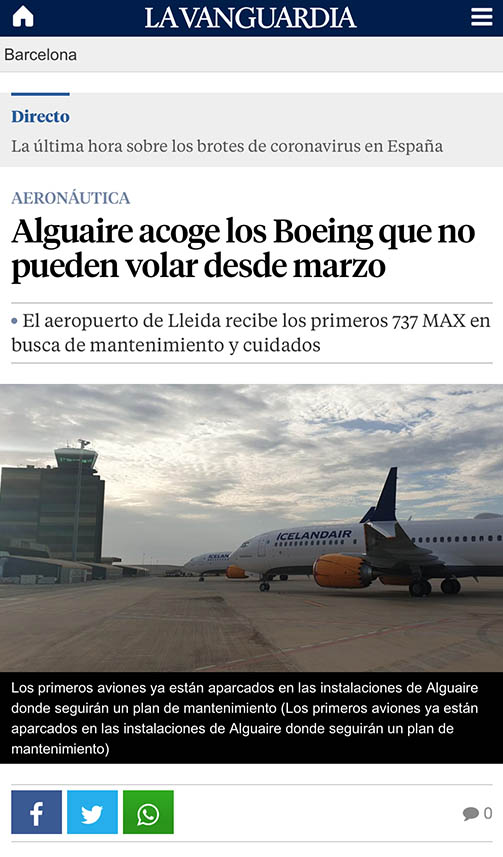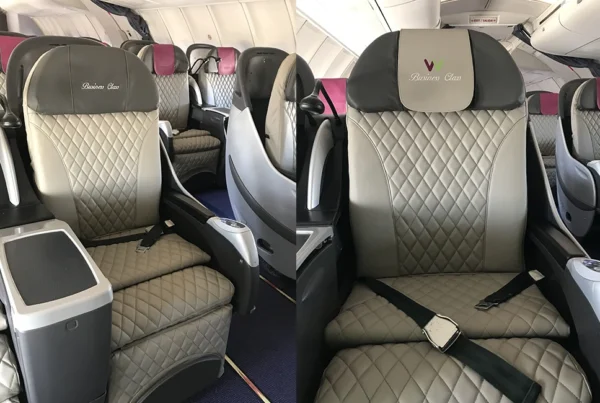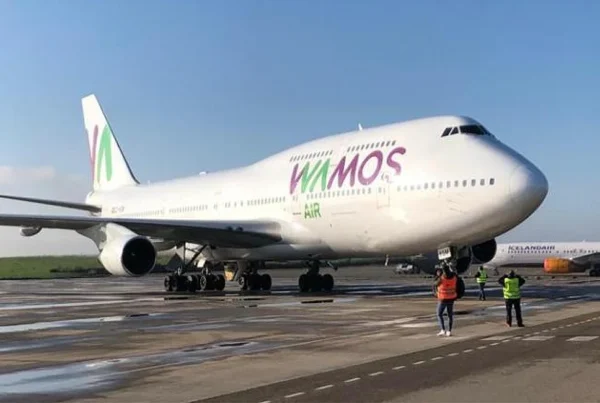Alguaire Airport Becomes Maintenance Hub for Grounded Boeing 737 MAX
The major Boeing crisis has landed at Lleida-Alguaire Airport as the manufacturer continues to work on a solution. The Boeing 737 MAX, the latest generation of aircraft, have been grounded worldwide since last March. Like falling dominoes, aviation safety agencies progressively banned their operation until the entire global fleet—387 aircraft from 59 airlines—was ultimately grounded. This exceptional measure followed the crashes of two MAX planes in Indonesia and Ethiopia, which resulted in 346 fatalities due to similar circumstances attributed to an automatic flight control software error that made them uncontrollable. Only with special permits have a few of these planes flown for specific tests or empty relocations, as the grounding order was so swift that many companies had to leave their 737 MAX planes parked at their last destinations, causing significant losses to airlines and a severe economic and reputational blow to the historic American manufacturer.
In addition to the planes already parked and integrated into airlines, Boeing’s facilities continue to accumulate dozens of B737s that have yet to fly and will not until the ban is lifted. Before the crisis, the manufacturer produced 52 aircraft per month, a figure recently reduced to around 40. One of the first customers of this new model was Icelandair, Iceland’s oldest airline, which began operations just before World War II.
The First Step
Two Icelandair 737 MAX 8s took off from Keflavik to Lleida on Friday.
The company has seen its planned expansion with this new model revised, with half a dozen aircraft—five MAX 8s and one MAX 9—grounded since last March, officially translating into red economic figures: the cost of this situation rises to around 125 million euros per quarter, according to the airline, leading to extra costs of over 250 million euros as it has had to lease other planes while its own couldn’t fly.
Iceland now faces a new and harsh winter. With the expectation that its fleet will remain grounded for several more months, the management decided that these almost-new aircraft couldn’t be left exposed to such harsh weather conditions. Initially, their destination was to be a French airport, but ultimately, they were relocated to an airport unlikely to be on their route map: Lleida-Alguaire, one of the two commercial facilities of Aeroports de Catalunya.
Last Friday afternoon, after weeks of preparation and obtaining special permits to fly, two of Icelandair’s 737 MAX 8s took off from Keflavik bound for Lleida, with an intermediate stop in Shannon, Ireland. Although these planes can easily cover the distance between Iceland and Catalonia, the unique nature of this transfer meant they flew much slower and lower than usual: less than 500 kilometers per hour compared to the usual 900, and at an altitude of 5,700 meters instead of their usual 10,600, to conserve fuel. These limitations were necessary because the planes flew with their flaps extended throughout the journey to avoid any issues, although this increased drag.
The Future of Alguaire
Commitment to training and aerospace development
On Friday afternoon, the two MAX aircraft finally landed on runway 13 at Alguaire. They will remain parked there, and four more units are expected to join in the coming days, according to Jens Thordason, Icelandair’s Chief Operating Officer. Additional Boeing 737 MAX aircraft from Norwegian are also expected to land in Lleida, although the exact number is yet to be determined. These planes will be maintained and undergo various ground tests until they can finally return to the skies in a few months.
This operation will significantly change the appearance of the tranquil Segrià airport while accelerating Alguaire’s transition to the desired industrial platform. This is the goal of Aeroports de Catalunya for parking, maintaining, and recycling aircraft, with Aeronpark and Servitec being the first companies to support this initiative. Concurrently, there is a push to increase commercial pilot training flights, signaling a takeoff for an airport whose future may lie more in technical aspects, training, and aerospace development than as a passenger station—a legacy goal that never quite took off.
Original Source: La Vanguardia





